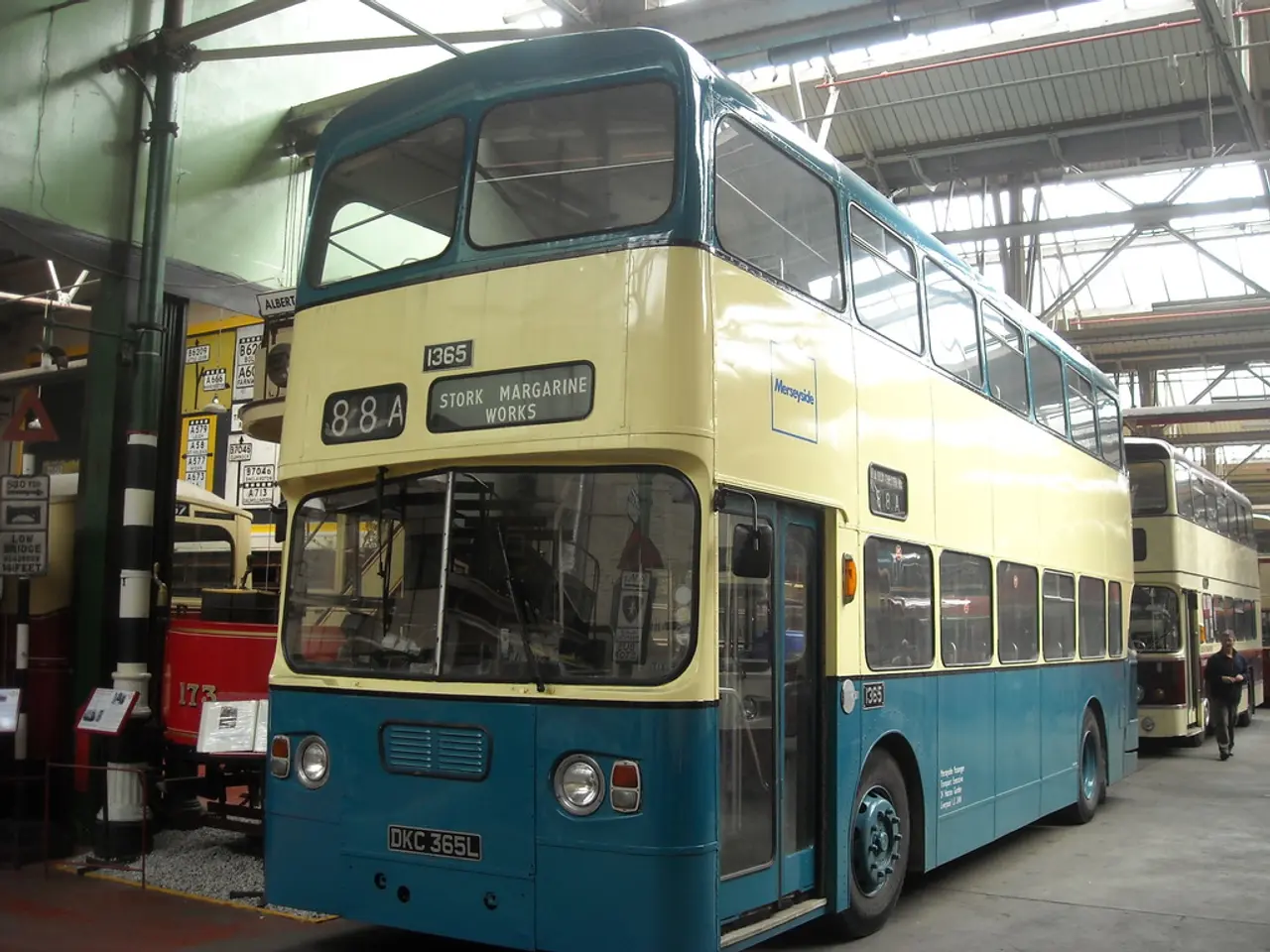"The Tale of the Long Ride: Unveiling the captivating past of the two-level bus"
In the heart of London, the double-decker bus has become an iconic symbol of the city's public transportation system. This journey through time takes us from the horse-drawn omnibuses of the 19th century to the modern, accessible, and stylish motorized vehicles that dominate the city's roads today.
Early Beginnings
The story of double-decker buses in London begins in 1829 with George Shillibeer's horse-drawn omnibuses, which were the forerunners to today's double-deckers. These early vehicles were designed to carry more passengers than the single-deck carriages of the time, and they paved the way for the evolution of London's public transport system.
The 20th Century: The Routemaster Era
By the mid-20th century, double-decker buses became a cornerstone of London’s public transport. One of the most notable models was the Routemaster, introduced in 1956 by Douglas Scott. This iconic vehicle is still considered one of the most stylish mass road transport vehicles Britain has ever produced.
In the 1970s, Daimler was a prominent manufacturer of London’s double-decker buses, with their Daimler Fleetline model (used from 1970 to 1978) representing a phase of modernization in the bus fleet.
Accessibility Improvements
Accessibility improvements began in the 1990s and 2000s with the introduction of low-floor buses—low-floor double-decker buses were first used in London in 1998, enhancing access for disabled passengers. By 2005, the bus fleet was fully accessible, ahead of national requirements.
The New Routemaster
The New Routemaster, unveiled in 2010 and introduced in 2012, was designed to replace the older Routemasters while retaining the classic double-decker aesthetic. It featured modern amenities such as two staircases, three doors, and an open rear platform. However, operational changes in 2020 limited boarding to the front door to reduce fare evasion.
Impact on Public Transportation
Double-decker buses have been crucial in managing London's dense urban passenger loads by maximizing available road space through vertical expansion of capacity. They have shaped the identity of London’s transit system, becoming a cultural and visual icon recognized worldwide. The numbering and organization of bus routes have also evolved alongside the fleet, with double-decker routes historically marked as central red routes to standardize and simplify navigation for passengers.
A Cultural Icon
The romantic appeal of the top deck of a London bus, despite modern inconveniences, has persisted for centuries. In the 1880s, the "garden seat" double-deck horse bus was introduced, with forward-facing roof seats in rows, a platform, and proper stairs. A century ago, the trilby, top hat, boater, and snap brim were popular hats in London due to etiquette and class demarcation.
Conclusion
The history of double-decker buses in London spans nearly two centuries, evolving from early horse-drawn omnibuses to iconic motorized vehicles that have greatly impacted public transportation. Their introduction and continuous modernization significantly influenced capacity management and the identity of London’s public transit system.
Rob Crossan, a journalist specializing in culture, books, lifestyle, and travel, is the author of this article. Crossan, who lives in Brixton, South London, regularly contributes to publications including the Daily Mail, Daily Telegraph, and Conde Nast Traveller.
Read also:
- Medical professionals at St. Remigius Hospital's rear facilities in Alexian
- DC Police Takeover, Ukraine Developments, Alaska Summit, Glacier Episode, Covid-19 Updates
- RNA Aggregation in Neurodegenerative Disorders: Novel Approaches for Therapeutic Intervention
- Exploring Chiropractic Intervention for Frequent Urinary Issues: Key Factors to Ponder




